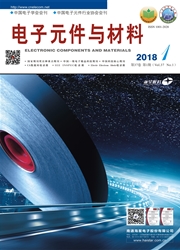

 中文摘要:
中文摘要:
非制冷探测器的制备,最常用的方法是通过微机械加工在CMOS读出电路上制作悬桥来实现。传感器将吸收的热量转化为电压信号或电流信号变化由检测电路检出,但该结构吸收效率偏低。本研究提出了一种基于表面等离子体谐振吸收的红外探测器结构。分析了光栅及器件结构参数对红外光学吸收的影响,采用COMSOL软件仿真,研究了金属-介质-金属三明治结构红外探测器的吸收效率,并通过结构参数的优化使吸收结构对特定红外波段的吸收率达到98%以上,在整个波长范围内平均吸收效率达30.5%。
 英文摘要:
英文摘要:
When heated by incoming IR radiation, an uncooled infrared sensor changes the temperature variation into a voltage or a current signal, which is detected by the readout circuit. Uncooled infrared sensors are usually made by building cantilevers on CMOS circuits. However, their performance is limited by the low absorption efficiency. To improve the absorption efficiency of an uncooled infrared sensor, the surface-plasmon-resonance structure was proposed. By COMSOL, the variation of the infrared absorption efficient with the structure parameters was simulated and analyzed. An absorption efficient of 98% within a specified spectral band and 30.5% averaged absorption efficiency within the whole wavelength range are reached by parameter optimization.
 同期刊论文项目
同期刊论文项目
 同项目期刊论文
同项目期刊论文
 期刊信息
期刊信息
